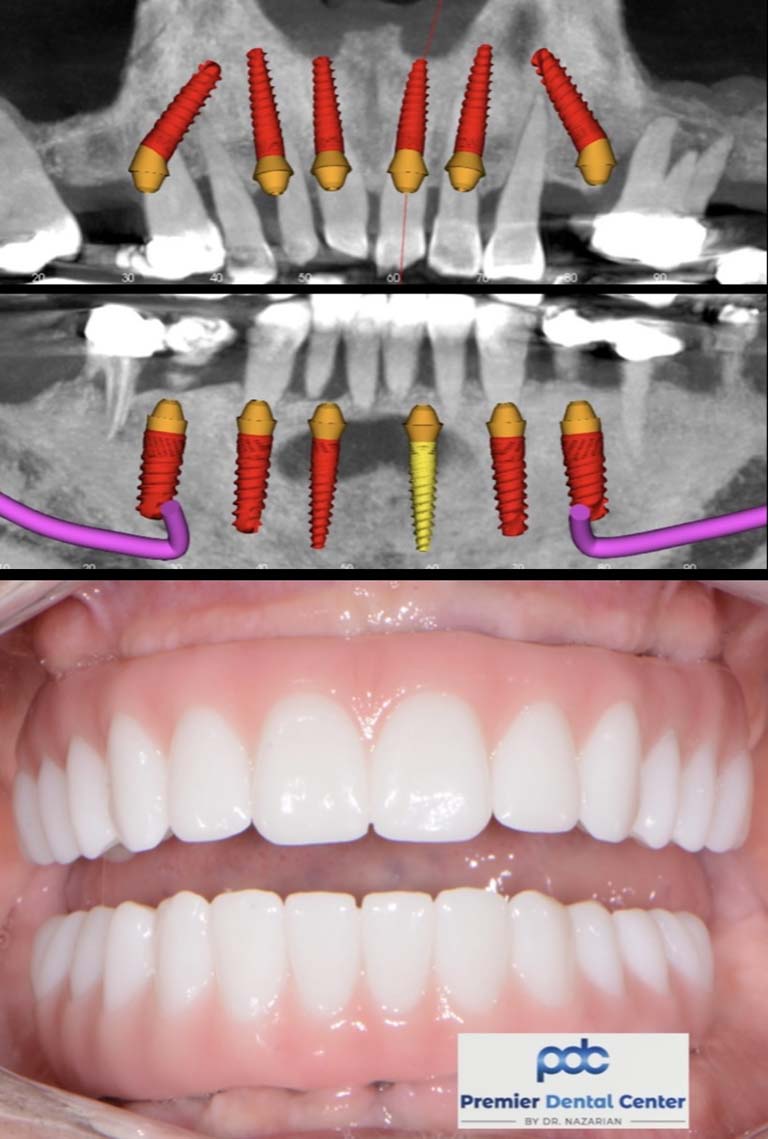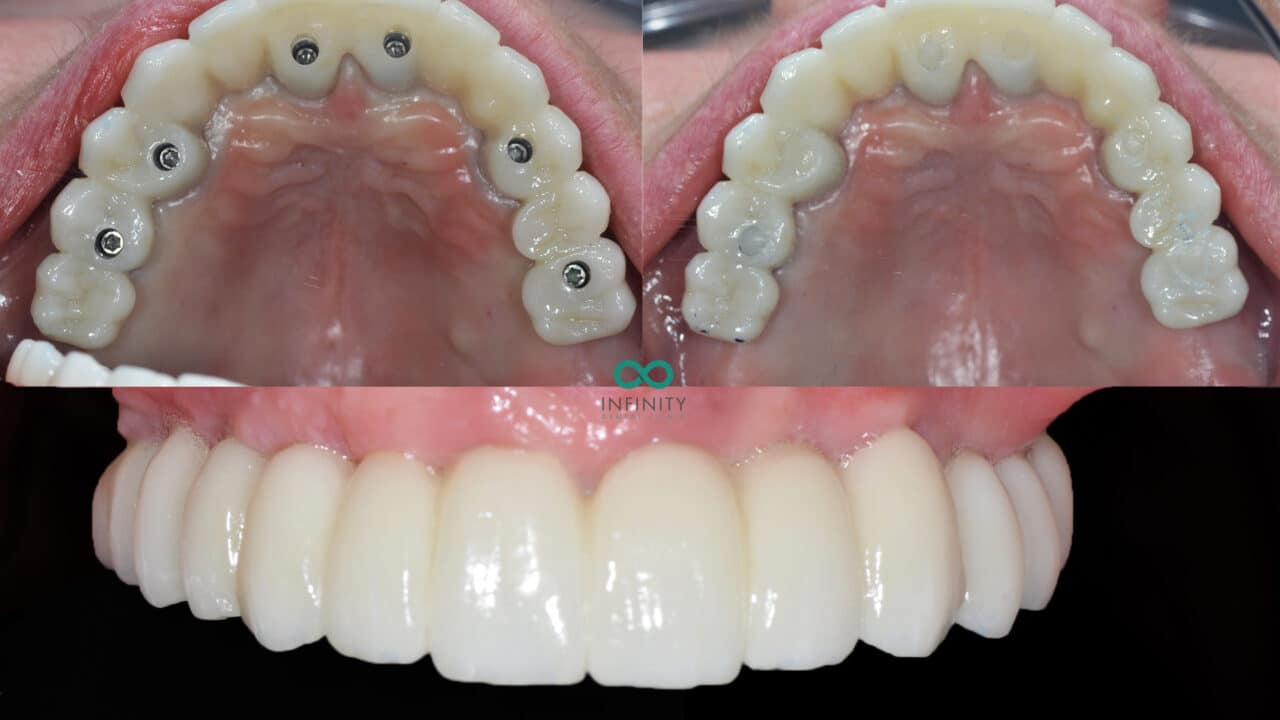Dental Sense Things To Know Before You Get This
Dental Sense Things To Know Before You Get This
Blog Article
Examine This Report about Dental Sense
Table of ContentsThings about Dental Sense9 Easy Facts About Dental Sense ShownThe smart Trick of Dental Sense That Nobody is Talking AboutDental Sense for Beginners
are medical tools operatively dental implanted right into the jaw to restore an individual's capability to chew or their look. They provide support for fabricated (fake) teeth, such as crowns, bridges, or dentures. When a tooth is lost as a result of injury or disease, a person can experience difficulties such as rapid bone loss, malfunctioning speech, or modifications to chewing patterns that result in discomfort.Oral implant systems include an oral implant body and dental implant abutment and might additionally include a joint addiction screw. Wisdom tooth cavity. The oral implant body is surgically inserted in the jawbone in location of the tooth's root. The oral implant abutment is normally affixed to the dental implant body by the joint fixation screw and extends through periodontals right into the mouth to support the connected fabricated teeth
(https://www.storeboard.com/dentalsense)Framework of The Dental Implant System selecting dental implants, speak with your oral company concerning the potential benefits and risks, and whether you are a prospect for the treatment. Things to consider: Your overall health and wellness is an essential consider establishing whether you are a good prospect for dental implants, for how long it will take to heal, and for how long the dental implant may stay in place.
Smoking cigarettes might impact the healing process and lower the lasting success of the implant. The recovery procedure for the dental implant body may take a number of months or longer, throughout which time you usually have a short-lived joint instead of the tooth. the dental implant treatment: Thoroughly comply with the oral hygiene directions provided to you by your dental provider.
7 Easy Facts About Dental Sense Shown
Implant failing can cause the demand for one more procedure to fix or replace the dental implant system. Brings back the ability to eat Restores aesthetic appearance Aids keep the jawbone from reducing because of bone loss Preserves the health of the bordering bone and gum tissues Helps keep nearby (neighboring) teeth stable Improves high quality of life Damages to bordering all-natural teeth throughout implant positioning Injury to the surrounding cells during surgical treatment, such as sinus opening Injury during surgical procedure (for example, crack of surrounding jawbone) Poor function, such as really feeling like the teeth do not bite with each other generally A feeling that the tooth is loosened or turning in area resulting from a joint screw loosening up Implant body failure (looseness of the dental implant body) as a result of systemic infection, which may be most likely in clients with unchecked diabetes mellitus because of local infection in bone and periodontals supporting the dental implant body as a result of postponed healing, which might be more probable in patients who smoke Trouble cleaning the periodontals around the implant, resulting in bad dental health Unattended gum disease Post-surgical pins and needles as a result of nerve impingement or damage Constantly notify wellness treatment suppliers and imaging professionals that you have dental implants prior to any kind of magnetic resonance imaging (MRI) or x-ray procedures.
FDA is not familiar with any negative occasions reported for MRI or x-ray procedures with oral implants. Oral implants systems are usually made of products that comply with worldwide consensus requirements of the International Organization for Standardization (ISO) or ASTM International. These criteria have information of what makes a safe material.

A dental implant is a structure that changes a missing tooth. With screw-like devices, the cosmetic surgeon inserts a dental implant into the jawbone, and it acts as an anchor for a fabricated tooth, called a crown. A tool called a joint connects the artificial tooth to the dental implant. The crown is personalized to fit the person's mouth and match the color of their teeth.
Dental Sense for Dummies
Some people are not eligible for oral implant surgical procedure. It is for dental surgeons to operate individuals with: acute illnessuncontrollable metabolic diseasebone or soft cells disease or infectionIf these concerns are fixed, a person can have the surgical procedure. In, oral cosmetic surgeons refrain from operating people with: If people with any of the above undertake oral implant surgery, there is a higher danger of the dental implant failing.

Oral implant surgical procedure is a personalized process. It's not the same for everybody. Yet the complying with gives a basic summary of what you can expect your dentist, oral specialist, periodontist or prosthodontist to do: Place the implant operatively. Give you time to heal. Attach the post and final crown, bridge or denture.
Next off, your cosmetic surgeon will carefully put the dental implant right into your jaw. Your cosmetic surgeon will certainly reposition your periodontals and close the cut with stitches. If your implant is near the front of your mouth, your dental professional will make a momentary tooth for you to put on up until you heal. This way, you will not have a void in your smile while you recover.
The Facts About Dental Sense Uncovered
Throughout the healing phase, your jawbone must fuse to the dental implant. This process can take anywhere from three to 9 months.
As soon as your dental implant heals, your dental professional can attach the abutment (little connector other article) and your last reconstruction (crown, bridge or denture). This generally takes regarding one hour to finish and might need a second minor surgery. You should not really feel any pain throughout your dental implant procedure because your company will make use of drug to numb your gums.
Report this page